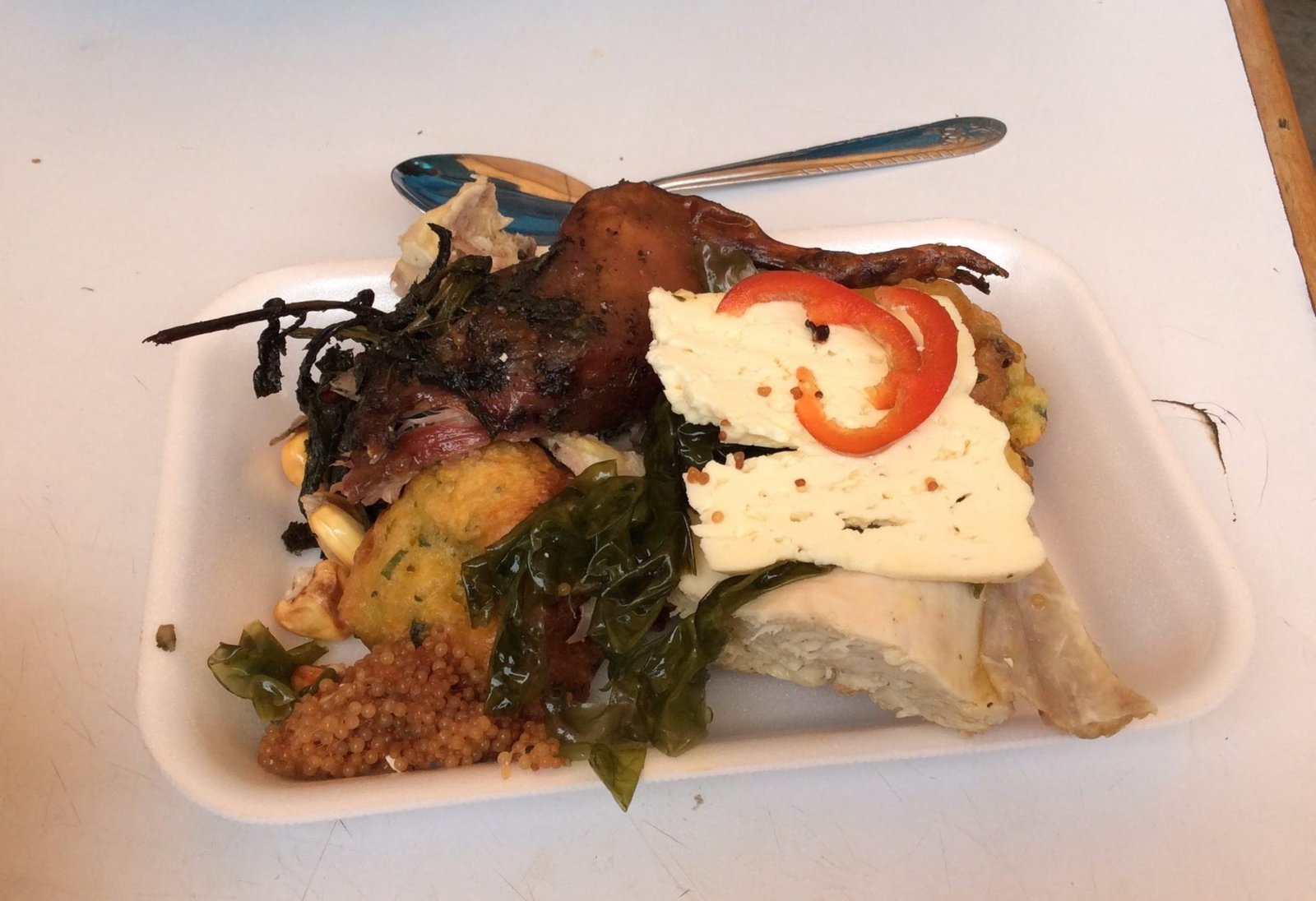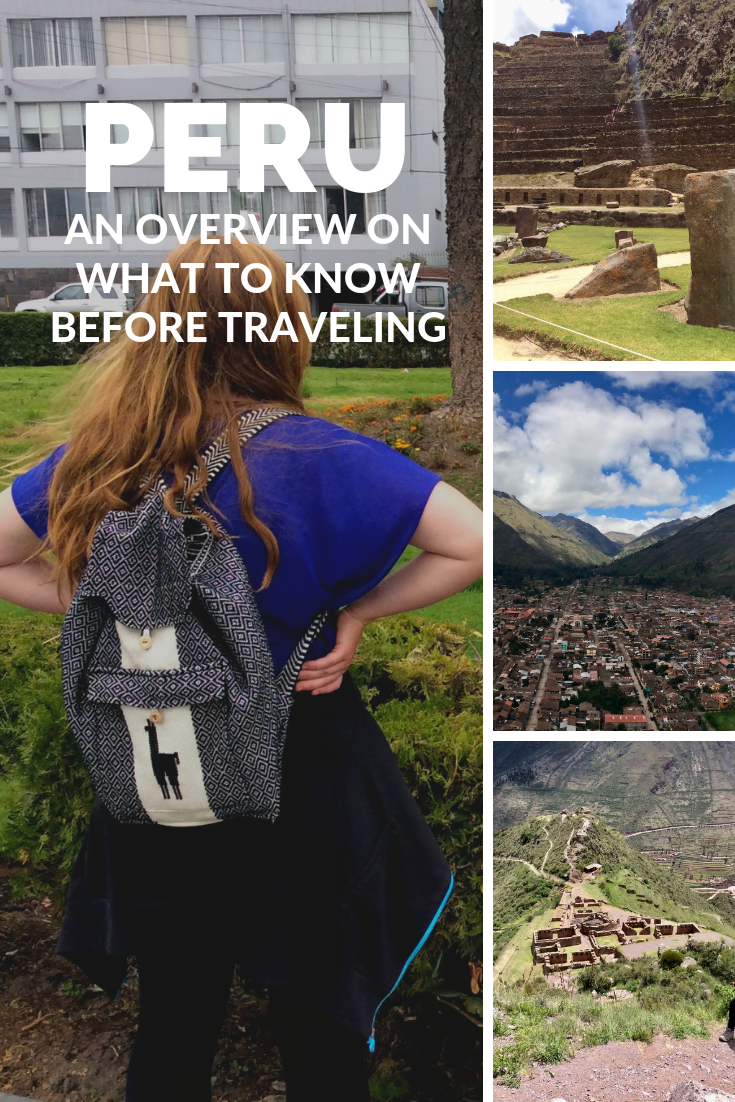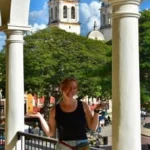I have to say: I think Peru is the most stunning country I’ve been to. It has it all – beautiful ruins; a rich culture; gorgeous mountains, desert and rainforest; and excellent cuisine. If you haven’t been here yet, or are looking for a little more information on the country as a whole, I’ve compiled an overview of Peru that covers the basics: geography, history, culture, transportation and more.
Peru's Geography

Peru is split into three different regions: the rainforest in the northeastern part of the country; the highlands in the central part; and the coast along the western edge bordering the Pacific Ocean.
The Amazon rainforest takes up by far the largest swath of land. The highlands essentially follow the path of the Andes Mountains, which is where I spent the largest amount of time in, and the coast is pretty self-explanatory. Lima and other coastal cities are known for their beaches and good surfing (from my very limited understanding of surfing, it appears that the Pacific Ocean is the place to be – Cali, Peru, Chile, etc)
Weather varies per region, but generally the winters are rainy and humid and the summers hot. Southern Peru is also largely desert, essentially an extension of the Atacama Desert. Expect to find a few random oases throughout, as well as a large amount of shantytowns.
Government
Peru is a presidential republic with three branches of power – the executive, legislative and judiciary. Like Chile, the president can be reelected but not for a consecutive term.
Voting is compulsory for citizens aged 18 to 70. Additionally, in 2003 Law 27734 made it so that 30% of all candidates for municipal elections must be women (or men, so neither gender can have more than 70%) and 15% from Indigenous communities. (If you’re interested in more information about women, poverty and Peru, this United Nations Reportanalyzes Peru’s achievements in three categories: women and poverty, violence against women, and women in power and decision-making.
Unfortunately, Peru as a whole has been plagued with government corruption for quite some time. Protests, particularly in Lima, occur semi-frequently.
The current president, Martín Vizcarra, has made pledges to fight corruption, but has recently become caught in his own corruption scandal involving a Brazilian construction company called Odebrecht (Odebrecht wasn’t just bribing government officials in Peru, but throughout Central and South America). And back in April of 2019, the former president Alan García committed suicide rather than getting arrested for corruption charges. He denied the charges up until his death.
An Overview of Peru's History
This is a very brief overview of some important parts of Peru's history; I encourage you all to do your own research to further expand on this topic.
Pre-Hispanic Peru
Traditionally, pre-Hispanic Peru used a method of rope-knotting, or quipu, to record their history. Although the Spanish conquistadores destroyed many of the quipu records, Peru has been able to at least partially re-construct their history through this system. Peru’s travel website has some excellent infographics and a good breakdown of pre-Hispanic Peru to check out.
Prior to the great Incan empire, there were other coastal and northern civilizations that had cropped up in Peru. Caral, located not too far north of Lima, is a UNESCO World Heritage Site and now considered the oldest civilization in the Americas!
Peru is of course home to the great Incan empire that dominated Peru and beyond from the 12thto 15thcenturies. Incan ruins are spread out throughout Peru, although are largely centered in the Sacred Valley in the highlands region. The stonework, so precise that you can’t even slip a piece of paper between the stones, was all done without mortar.
The Arrival of the Spanish
With the arrival of Francisco Pizarro in the early 1500s, everything changed dramatically. The Viceroyalty of Peru was created in 1542 and the mining of precious materials such as gold and silver began. Gold, which had been used to ornament Incan Sun Temples, was stolen and mined and melted down into gold bars to be sent back to Spain.
Peru declared independence from Spain in 1821, with the help of the union of Simon Bolivar and José de San Martín’s armies. However, not all of the royalist forces were defeated until 1826.
Languages Spoken in Peru
All in all, Peru has over 50 spoken languages, the vast majority of them local Indigenous languages within the Amazon Rainforest and the central Andes, but in this overview of Peru I'll just mention the top three languages spoken. Most Peruvians speak Spanish, although Quechua and Aymara, two Indigenous languages, are also still quite widely spoken.
Religion


The most dominant religion in Peru is Catholicism, but in many areas it has been infused with Indigenous traditions. The Quechuan people residing in the Andes Mountains still refer to Pacha Mama (Mother Earth) and Wiracoccha (the God that rose from Lake Titicaca and established the Incan people). However, they also celebrate Catholic holidays with great fervor (we were there for the Three Kings Day, which was an intriguing blend of Catholic and Indigenous rituals).
Peruvian Food & Drink
An Overview of Peru's Food
If you didn’t know already, Peru (and particularly Lima and Arequipa) is known for its incredible gastronomy. Chefs from all over the world come here to practice and learn. Food courses abound in Lima. So if you’re open to trying new things, are cool with spicy and raw seafood, you’ve got to travel to Peru.
Food varies some by region, but soups such as caldo de gallina are very popular, as well as the stuffed rocoto pepper. Additionally, Arequipa, a city also located in the mountains, is known for their blend of Peruvian and Chinese food.
Cuy, or guinea pig, is commonly found in the central Andes region, and actually is quite tasty, although there isn’t too much meat on there to eat.

A Peruvian meal of guinea pig, fish eggs, cheese, corn, fried dough and bread.
Food in some of the smaller, more touristy towns is less impressive. In Ollantaytambo, there was an abundance of restaurants attempting to cater to tourists. I’d advise to stay away from pasta or burgers in Peru. The wood-fired pizza in Ollantay is quite good, but not something I wanted to eat everyday.
The Menu del Día Option
Peruvians tend to eat out a lot (because it’s so cheap) so there are pretty much always at least a few restaurants that cater to locals. They generally start with a soup (quinoa soup was one of my favorites) and then have a few different dinner options off of their menu del dia that you can choose from. The soup is largely broth with vegetables and sometimes a couple chunks of meat for flavoring (don’t be scared if you see a foot in there). Dinner can vary immensely, but is usually a chunk of meat with some type of sauce alongside a bed of rice or some other option.
The meal of the day usually comes with a cup of tea (sometimes you can choose the tea, sometimes you can’t) and occasionally with a small desert, usually some type of jell-o like thing. The meal costs 6-8 soles, or around $2. If you want food that is both cheap and authentic, go to the local places!
An Overview of Peru's Drink
For non-alcoholic drinks, juices are common and delicious! Arequipa has a huge market where a section of it is just people selling juice made from fresh fruits. Smoothies or milkshakes are generally just juice with added milk, so they don’t have the same consistency that smoothies/milkshakes have in the U.S.
Chicha morada, made from corn, is also a popular non-alcoholic drink that can be found in many different areas.
Although craft breweries are not exactly thriving in Peru, there are a few options you can buy in bottle. Tap beer is more rare, but sometimes available. The Arequipeñain Arequipa and the Cusqueñaavailable in Cusco and the surrounding Sacred Valley are good picks. There are some breweries in Lima, as well as one brewery in the Sacred Valley just outside of Ollantaytambo.
Pisco is well-known in Peru (and Chile; they argue over who “invented” Pisco). Pisco is made in the southern region of Peru, but pisco sours are available throughout the country.
Music & Nightlife in Peru
We didn’t go out much while in Peru, so I can’t speak too much to this. Lima certainly has a bustling nightlife and a lot of options. Cusco as well. Smaller towns of course are going to offer less of this, but there’s usually a bar or two, and then beer is widely available at corner stores.
Transportation in Peru
Like almost all of South America, Peru’s transportation system is largely buses and colectivos. In the Sacred Valley, we used vans to get from city to city; in larger metropolitan areas they’re usually buses. Of course, taxis are in abundance is well – there are both regular city taxis as well as “taxis” driving unmarked cars (generally black) that will take you to destinations that are farther away. They’ll usually yell out names of places to try and get business.
Peru also has a few different domestic airports, so instead of traveling 12+ hours from Lima to Cusco, you can hop on a domestic plane and not spend a whole ton of money. Domestic planes are usually quite small and old, but we arrived at our destination just fine.
Lima has a nice metro system now, although it gets packed. If you don’t like feeling like a squashed sardine, you may want to skip the metro. However, it’s a cheap and convenient way to get around the city.
There is some rail, particularly in the Sacred Valley; they actually make you take a train to get to Machu Picchu (or you can hike the Incan Trail), but they hike up the price to a hefty amount for foreigners. Peruvians travel for much cheaper on local trains, and can also access Machu Picchu for free on Sundays.
Final Thoughts: Overview of Peru

Viewing the Incan Ruins in Maras while wearing a funky hat and shirt
I’ll just say it again for anyone who needs affirmation: if Peru isn’t on your top travel list, this needs to change. Peru has beautiful sites, a fascinating history, complete with extraordinary ruins, and well-preserved cultures. And did I mention that Peruvian food is to die for? If you want to go beyond the basics of Peru and need inspiration on where to go in Peru, feel free to access my one-month itinerary of travel in Peru.
Liked this post? Pin it!


Subscribe to receive Snook Outta Water's monthly newsletter with exclusive updates and content.


